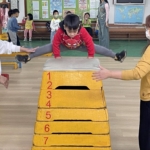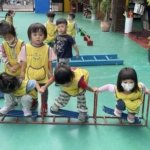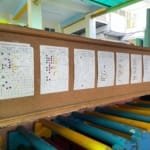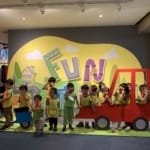Early reading, also known as "pre-reading", is a way for preschool children to learn to transition from oral language to written language through the use of illustrated books or adults' vivid and visual readings, and to acquire the interest, habits, skills, and ability to read on their own through pre-reading, pre-writing, and pre-literacy, so as to promote the synergistic development of language, thinking, imagination, and personality, and to "grow up to become people who are full of passion for reading, and are eager to and able to read efficiently and effectively".
In 2010, the Ministry of Education issued the Guidelines for Kindergarten Education (for trial implementation), which included early reading education for children, clearly stating that it is necessary to "guide children to contact excellent children's literary works, so as to make them feel the richness and beauty of the language, and to utilize books, paintings, and a variety of other ways to arouse children's interest in books, reading, and writing, and to cultivate pre-reading and pre-reading and writing skills," and so on. From this, we can see that early reading plays an extremely important role in children's education and development.
Characteristics of Early Childhood Reading
Characteristics of Early Childhood Reading For children, all behaviors related to reading activities are reading, which includes not only printed words, but also a variety of other materials such as pictures, charts, and symbols.
Early reading is the main way for children to learn about the world and gain comprehensive development. The viewpoint of early reading and writing (emergent literacy) is that "reading is a continuous development from birth to the end of life, and the level of early reading in the pre-school stage continues to improve with the development of age, and the rapid development of the age of 4-5 years old". In this way, it is necessary for children to have a lot of contact with and read books before school, in order to develop good reading habits in a timely manner, and to master the correct way of reading, so as to effectively improve their reading ability. Because of the limited literacy of pre-school children, this stage of reading mainly has the following characteristics:
(a) The main focus is on picture reading, and the content of books with large pictures, lots of pictures and few words;
(b) Reading is mainly parent-child shared reading;
(iii) Focusing on the development of children's interest in reading, reading skills and reading habitsThe
Analysis of the Importance of Picture Books in Child Development
Picture books are picture-based books with simple language, beautiful pictures and interesting stories, which can greatly stimulate children's interest in reading. Excellent classic picture books, just look at the picture can read the main plot of the story, illiterate children can also enter the story world through the pictures, and from the discovery of fun. Reading picture books has an immeasurable effect on the cultivation of children's reading ability and even their lifelong growth and development.
Picture book reading is irreplaceable for children's development, and it is an essential book for children's healthy growth. Parents should not only create a relaxing and enjoyable reading environment for their children to promote their love of reading and improve the effectiveness of early reading, but more importantly, to choose excellent reading texts and to master the correct method of reading guidance.





